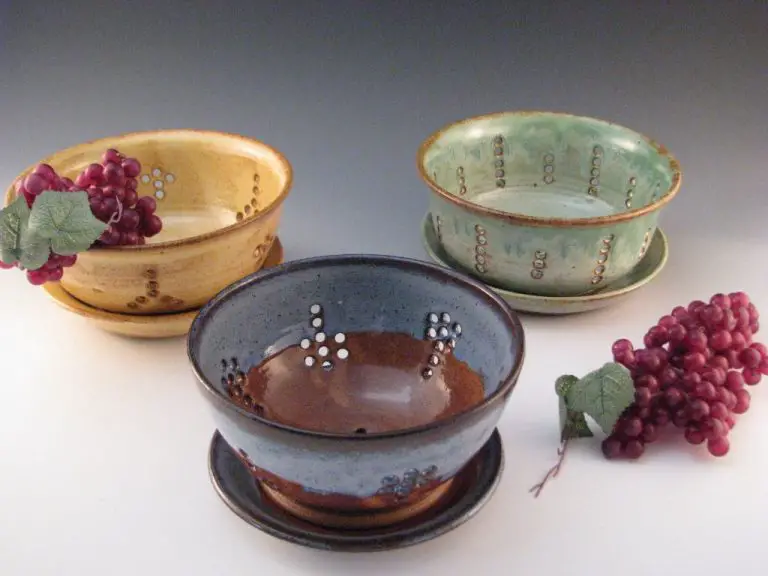What Is The Difference Between A Mixing Drill And A Regular Drill?
Mixing drills and regular drills are two different types of power tools. A mixing drill is a specialized tool designed specifically for mixing materials like concrete, mortar, thinset, grout, paint, and joint compound. Regular drills are more general purpose tools made for drilling holes and driving fasteners.
Mixing drills have features tailored for mixing heavy, thick materials. They have high torque motors that provide extra power to stir dense mixtures. The chuck is able to lock down mixing paddles securely. The gearing provides high torque at low speeds optimal for mixing. Regular drills lack these specialized features and are not well suited for mixing heavy materials.
Power and Speed
Mixing drills differ from regular drills in that they have more power and adjustable speed control. A regular drill may have around 300-600 watts of power and operate at a single speed, usually around 1500 RPM. Mixing drills, on the other hand, often have motors in the 1000-1500 watt range and feature variable speed triggers to adjust the RPMs (revolutions per minute) as needed (Mixing drill worth it?). This allows mixing drills to provide more torque and maintain constant speed, even under heavy loads while mixing thick materials like mortar or concrete.
The higher power output and variable speed are crucial when using paddle attachments to mix viscous materials in a bucket or wheelbarrow. Mixing mud, concrete, drywall compounds, grout, and other materials requires high torque at lower RPMs to properly stir the contents without spraying them everywhere. A standard drill lacks the adjustable speed control and sustained power delivery at low speeds to mix these heavy compounds efficiently.
Chuck Size
Mixing drills have larger chuck sizes than regular drills to accommodate mixer attachments. The chuck is the part of the drill that holds the bit. Regular drills often have 3/8″ or 1/2″ chucks, while mixing drills have 5/8″ or larger chucks.
The larger chuck size allows mixing drills to use paddle and mixer attachments that wouldn’t fit into a standard drill chuck. These attachments are designed specifically for mixing viscous materials like mortar, concrete, paint, drywall compound, etc. They have an elongated shaft and wide, flat ends to efficiently mix these thick substances.
For example, the Bosch GBM9-16 mixing drill has a 5/8″ keyed chuck to fit mixing paddles up to 6 inches wide (source). Trying to fit a large mortar mixing paddle into a standard 1/2″ drill chuck simply wouldn’t work. The mixing paddle attachments need the wider chuck size to properly seat within the drill and allow rotation.
In summary, the larger chuck size on mixing drills allows compatibility with specialized mixer attachments not possible with regular drills. This enables efficient, heavy-duty mixing capabilities.
Gearing
Mixing drills have gearing that is optimized for high torque tasks rather than speed. The gearing in a mixing drill uses larger gears with a lower gear ratio to produce much more torque, allowing it to power through thick, dense materials without slowing down or overheating. This high torque comes at the expense of speed. Regular drills are geared for lower torque and higher speeds, making them better suited for drilling holes and driving screws where speed is more important than sheer power.
According to Collomix, “Drill motors lack the necessary power for moving a mixing attachment through heavy materials, have gearing optimized for speed over torque, can overheat, and lack a slipping clutch to protect the user and tool.”
The lower gear ratio and larger gears in a mixing drill’s transmission are designed to turn the paddle at a slower, higher torque speed ideal for mixing mud, concrete, mortar and other dense materials without straining or overheating the motor.
Clutch
Mixing drills include a mechanical clutch that helps protect the motor and gearing from damage when the drill bit binds up or gets jammed. The clutch allows the motor to continue spinning while the drill bit stops when it encounters too much resistance.
Without this clutch, if the drill bit suddenly binds up while mixing thick material like concrete or mortar, the resistance could damage the motor, gears or chuck. The mixing drill’s clutch is designed to slip when it senses this excessive torque, disconnecting the drill bit from the motor temporarily to prevent damage. Once the obstruction is cleared, the clutch re-engages and allows normal operation to resume.
So the presence of the clutch provides an important safeguard for the drill during mixing applications where sudden binding is more likely to occur. It allows optimal transmission of power to the drill bit during normal operation, but also intelligently interrupts power flow when needed to protect the internal components of the tool.
Sources:
https://www.dewalt.com/product/dcd130t1/60v-max-mixerdrill-e-clutch-system-kit
https://powerplanter.com/products/dewalt-dcd130t1-60v-max-mixer-drill
Attachments

Mixing drills utilize a variety of attachments and accessories that allow them to mix and blend ingredients effectively. Some common attachments include:
- Dough Hooks – Used for kneading and mixing dough. The hooks help thoroughly incorporate ingredients and develop gluten structure in bread dough [1]
- Whisks – Designed to whip air into ingredients like eggs, cream, and batters. Whisk attachments provide aeration for fluffier results [2]
- Blender Attachments – Allow mixing drills to blend smoothies, purees, and emulsions. Often feature multiple blades to efficiently breakdown ingredients [3]
- Paint Mixing Paddles – Specialized for mixing paint cans. Prevent clumping and ensure uniform color and consistency [1]
- Meat Grinder Attachments – Enable mixing drills to grind meats for sausages, patties, etc. Allow processing larger quantities than stand-alone meat grinders [2]
These attachments expand the functionality of mixing drills beyond simple stirring and blending. The variety of accessories allows cooks, bakers, painters, and DIYers to accomplish many tasks with just an inexpensive drill.
Applications
A mixing drill is designed specifically for mixing and stirring tasks that require a consistent texture and thorough blending of materials. Some common applications include:
- Mixing thinset mortar for tile installation – A mixing drill with a mortar paddle attachment can quickly and evenly blend mortar powder with water for an optimal consistency (Can A Drill Attachment Mix Mortar, Concrete, Cement Or …).
- Mixing joint compound or spackle for drywall – Using a mixing paddle ensures an even consistency without lumps for a smooth finish.
- Mixing paint – A mixing drill prevents paint from settling or separating for consistent coverage.
- Mixing concrete – A dedicated mixing drill can handle the thick consistency and integrate components like aggregate and admixtures (Mixing drill worth it? : r/Tools).
- Mixing batter for baking – A mixing drill with a wire whip attachment is ideal for thoroughly incorporating butter, sugar, eggs and other ingredients.
- Mixing drinks – A mixing drill with a milkshake attachment can blend thick shakes and smoothies.
The torque and variable speeds of a mixing drill allow thorough blending of a variety of materials from thin to thick consistencies for consistent textures.
Price
Mixing drills typically cost more than a standard drill. A regular cordless drill can be purchased for as little as $50-100 for a basic model from a hardware store brand. However, an entry-level mixing drill will be priced from $150 and up from the major power tool brands like Milwaukee and Makita. Higher-end professional models with advanced features can cost over $500.
The primary reason for the price difference is the more heavy-duty nature of a mixing drill. They have a more powerful motor to handle thick mixing applications, sturdier gearing, and a specialized paddle mixing attachment. This robust construction comes at a cost. Additionally, mixing drills are more of a specialty product made for professional construction applications like mixing mortar or drywall compound. They are produced in lower quantities than standard drills, which raises the price.
Portability
Regular drills are often lighter and more compact than mixing drills. This makes them easier to carry and transport between job sites. Some key differences in portability include:
Weight – The average weight of a regular 12V drill is around 3-5 lbs. Mixing drills often weigh more in the range of 8-12 lbs since they have more powerful motors and heavier attachments. This extra weight makes mixing drills less convenient for taking up a ladder or onto scaffolding.
Size – The body and handle of a regular drill is designed to be held and operated with one hand. Mixing drills tend to have larger casings to house bigger motors and gears. This increased size reduces maneuverability in tight spaces.
Shape – Regular drill bodies are straight and cylindrical for drilling into flat surfaces. Mixing drills have oval or scooped buckets to hold more mixing material. This shape prevents them from fitting into some tool belts or bags.
Battery life – Compact 12V batteries on regular drills deliver ample runtime for occasional drilling tasks. But mixing numerous buckets of material drains larger 20V+ batteries faster on mixing drills. Carrying extra batteries reduces overall portability.
All of these factors allow regular drills to be carried and used in more locations. Their light and nimble design makes them a more portable option for basic tasks.
Conclusion
To summarize, the key differences between a mixing drill and a regular drill come down to features that optimize them for their intended uses. Mixing drills have higher power, slower speeds, larger chuck sizes, more torque, and special mixing attachments. This makes them ideal for mixing thick substances like concrete or drywall mud. Regular drills are lighter, more affordable, and better suited for drilling holes and driving screws thanks to their faster speeds, smaller sizes, clutch, and drill bit attachments.
When deciding which tool is right for your needs, consider what materials you’ll be working with and what tasks you need to complete. If you plan to mix a lot of heavy compounds or thick liquids, a mixing drill is the best choice. If you mainly need to drill holes and drive fasteners, a regular drill will likely be the better option. Selecting the right tool for your projects will make your work much easier.


